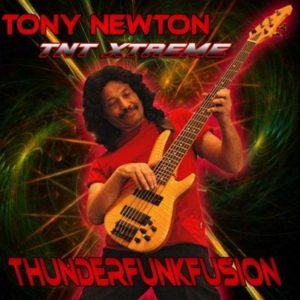Description
The Summit Symphony by Antonio(Tony) L. Newton
Antonio L. Newton also known as Tony Newton is a music artist, composer and multi-instrumentalist with a career in the music industry that spans over thirty years. After being somewhat of a child prodigy playing in orchestras, it was as a virtuosic bass player that he played on many classic Motown recordings and can lay claim to playing on hits by Michael Jackson, Diana Ross & The Supremes and Stevie Wonder and others. If that isn’t impressive enough, he also acted as musical director to Smokey Robinson and in his youth was the prize student of his bass tutor, the legendary James Jamerson (himself a Motown recording staple). He can also lay claim to being one of the creators of the Jazz-Rock-Fusion genre with Miles Davis’ drummer in the Tony Williams Lifetime.
Since then he has developed his talents as a composer and even formulated his own acclaimed harmonic language which he calls ‘Novaphonic sound’ which is based on Quartal and quintal harmonics. This symphony contains seven movements of highly complex instrumentals that are orchestral in nature though electronically rendered rather than real orchestras and choirs.
The summit symphony also goes by the nickname of Evolution ‘because it represents the seven mystical levels of consciousness which humans and humanity personally evolve to reach their highest potential’. The music, in the composer’s own words, “The work is a blend of ‘pseudo-classical, contemporary and New Age’” Remarkably, this constitutes the World Premier release after more than 21 years sitting among several other Newton unreleased body of work(s).
First movement Hope shows Newton’s gift for orchestral writing, with interweaving parts interspersed with choral voices creating a rich sonic texture. The harmonies structures are complex and challenging, but the music retains a fundamental melodic core, never becoming atonal or dissonant (Newton uses the term ‘Tran sonant’). As it is through composed, meaning there is no repetition of material, the music is constantly morphing and evolving, which holds the interest throughout.
Second movement Communion is slower and more meditative in nature, just piano and strings. The dense chordal structures are a good example of Newton’s unique and highly original approach to harmony. There is as much influence from jazz as there is from classical here, and it brought to mind the contemplative moments of A Love Supreme by John Coltrane.
Confrontation, the third movement, is similar in its instrumentation to the first piece, opening with a fanfare type musical figure which becomes a leitmotif for the whole composition. While the method is very modern and highly original, the way the sense of tonality feels like it is constantly shifting under the feet brought to mind the late period works of Wagner, who also had his own radical ideas on harmony. This piece always held my attention despite its length and imposingly complicated structure. The instrumentation in this piece is notable for the lack of piano, which is an instrument Newton favours, being extremely accomplished, as evidenced by the number of solo works he has written for the piano.
My favourite piece on the album is the fourth movement, Communication. The music is darker and notably more intense than what has preceded it, with stormy cello lines predominating, bringing to mind the sturm und drung of Beethoven. The music is gripping throughout its almost eight minute duration as brass, strings and woodwind lines swirl and clash, leading to a tumultuous climax towards the end.
By contrast, the fifth movement Evolution is deeply tranquil with a highly mystical and ethereal feel, spectral-sounding synths melding with beautiful choral lines to create a unique soundscape. This is the closest to what would be termed New Age or ambient music; though the dense chordal clusters that emerge later in the piece reminds us this is still very much the same composer.
Illumination, the sixth movement, continues this other worldly sound world, wisps of delicate, icy synths drifting and morphing with spacey sound effects to create an unreal sense of dislocation. This is the most sparse, minimalistic piece on the album but is powerful in an understated way. The seventh final movement Affirmation is a return to the orchestral fanfare of earlier pieces, with a stirring sense of hope and achievement created by the pulsing string motifs and stabs of brilliant brass. It is a very uplifting ending and a suitable one for the album, the resolution of a spiritual and musical journey, and this track alone is an epic journey at twenty minutes long.
Overall, this is a very innovative and accomplished album, highly ambitious both artistically and musically, yet a fully realized vision. Not many composers can claim to have developed their own form, but not many are like Newton, who is also one of few who can lay claim to originality. The word artist is thrown about in the music industry so much that it has lost all meaning, but Antonio L. Newton is a good reminder on what an artist really is and this is a fine piece of musical art.
For those interested in learning more about this symphony, there is a booklet that comes with it containing not just information on the genesis and philosophical meaning of the work but also a selection of poems that are to be read in combination with listening to the symphony. These help to further elucidate the ideas behind the music as well as being part of the art work themselves. The booklet also contains detailed program and composer notes for the symphony (such as instrumentation used notable aspects of the compositional style of each movement) and a biography of Newton’s life thus far.
Alex Faulkner (The Faulkner Review)





Reviews
There are no reviews yet.